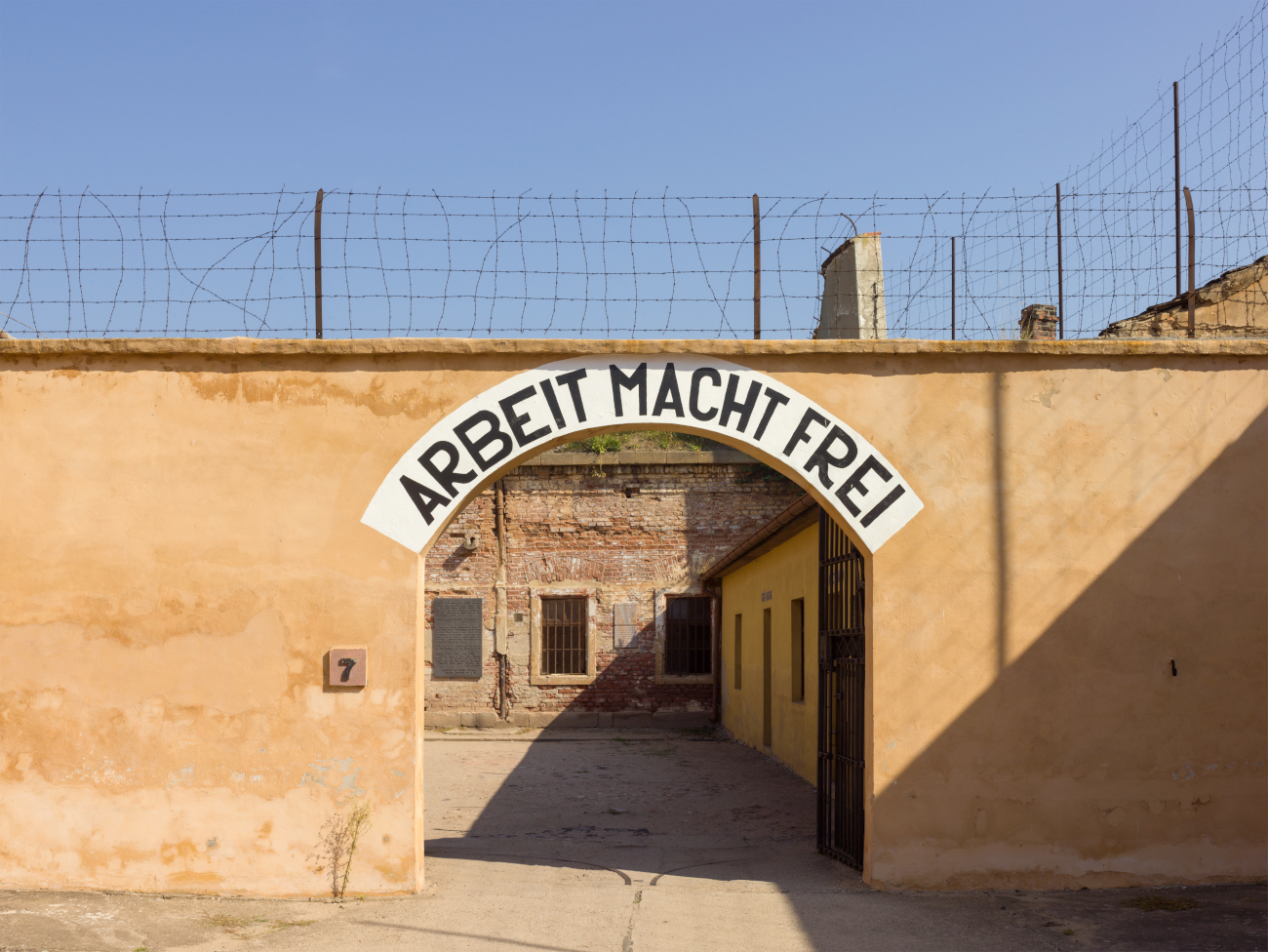Gellir lawrlwytho cynnwys at ddefnydd anfasnachol, megis defnydd personol neu ar gyfer adnoddau addysgol.
Ar gyfer defnydd masnachol cysyllwch yn uniongyrchol gyda deilydd yr hawlfraint os gwelwch yn dda.
Read more about the The Creative Archive Licence.
Disgrifiad
A photograph of the Theresienstadt Ghetto archway with the phrase Arbeit Macht Frei (Work sets you free). The image was taken in July 2013.
About the ghettos.
During World War II, German authorities concentrated Jewish populations in ghettos. Ghettos were often enclosed districts that isolated Jews from the rest of the population. The Germans established at least 1,143 ghettos in the occupied eastern territories.
Some ghettos existed for only a few days. Others lasted for months or years. The Germans saw them as a means to control and segregate Jews while the Nazi leadership deliberated upon options for the permanent removal of the Jewish population. Nazi-appointed Jewish councils (Judenräte) administered daily life in the ghettos.
About Theresienstadt Ghetto.
Theresienstadt Ghetto served as a transit camp for Jews whom the Germans deported to killing centres, concentration camps, and forced-labour camps. It was expected that the poor conditions there would hasten the deaths of many deportees, until they could be deported.
Theresienstadt Ghetto was exceptional in that the Nazis used it to hide the nature of the deportations. In Nazi propaganda, Theresienstadt was cynically described as a ‘spa town’ where elderly Jews could ‘retire’ in safety.
Despite the terrible living conditions and the constant threat of deportation, Theresienstadt had a highly developed cultural life. Writers, professors, musicians, and actors gave lectures, concerts, and theatre performances.
Fifteen thousand children passed through Theresienstadt. Although forbidden to do so, they attended school. They painted pictures, wrote poetry, and otherwise tried to maintain a vestige of normalcy. Approximately 90 percent of these children perished in killing centres.
The Germans permitted the International Red Cross to visit in June 1944. It was all an elaborate hoax. The Germans intensified deportations from the ghetto shortly before the visit, and the ghetto itself was "beautified." Gardens were planted, houses painted, and barracks renovated. The Nazis staged social and cultural events for the visiting dignitaries. Once the visit was over, the Germans resumed deportations.
Of the approximately 140,000 Jews transferred to Theresienstadt, nearly 90,000 were deported to almost certain death. Roughly 33,000 died in Theresienstadt itself.
Sources.
United States Holocaust Memorial Museum, Holocaust Encyclopaedia: Ghettos [accessed 18 August 2022]
United States Holocaust Memorial Museum, Holocaust Encyclopaedia: Theresienstadt [accessed 18 August 2022]
Wikimedia Commons, Czech-2013-Terezin-Theresienstadt-Arbeit macht frei (2013) [accessed 18 August 2022]



Oes gennych chi wybodaeth ychwanegol am yr eitem hon? Gadewch sylwad isod
Sylwadau (0)
Rhaid mewngofnodi i bostio sylw